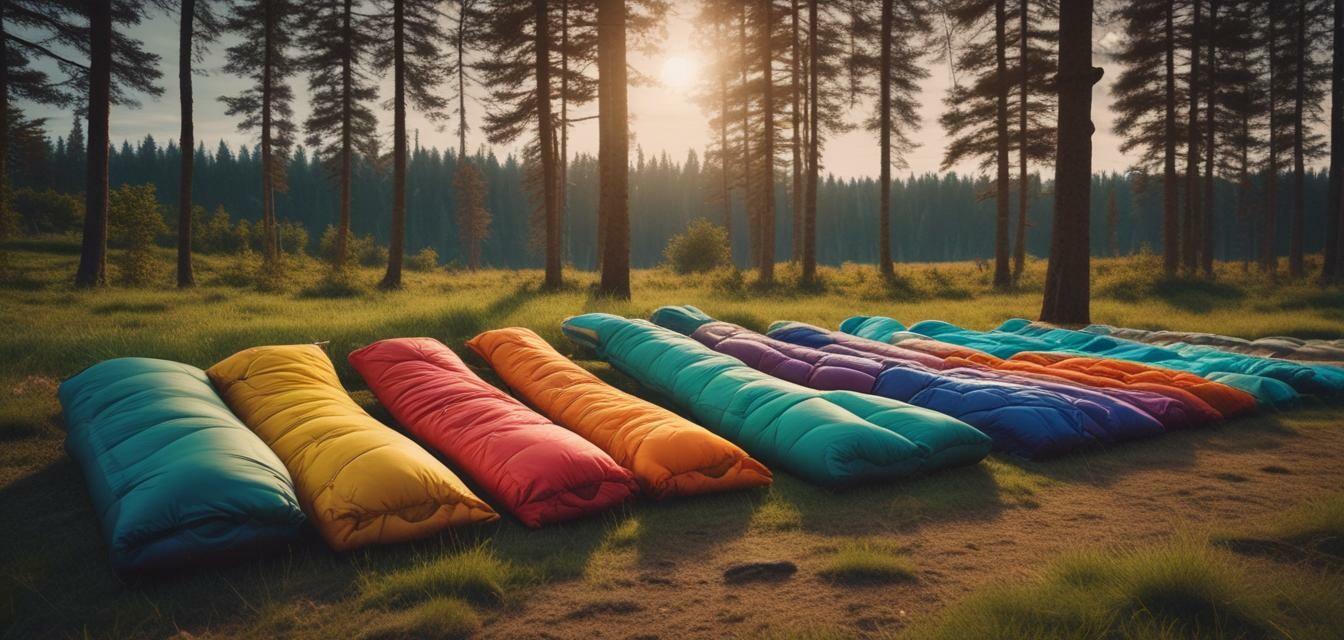
How to Choose the Right Sleeping Bag for Different Climates
Key Takeaways
- Choose the sleeping bag based on the climate: hot, temperate, or cold.
- Consider insulation type: down or synthetic.
- Pay attention to temperature ratings for optimal comfort.
- Look for features like weight, packability, and waterproofing.
- Understanding your camping style can help you make a better choice.
When it comes to camping, having the right sleeping bag can drastically affect your experience. The temperature, humidity, and environment all play a role in what type of sleeping bag would be the best fit for your journey. This guide will assist you in making an informed decision about selecting the perfect sleeping bag depending on different climate conditions and terrains.
Understanding sleeping bag types
Before diving into climate specifics, let’s explore the two main types of sleeping bags: insulated and uninsulated.
| Type | Description | Ideal For |
|---|---|---|
| Insulated | Filled with materials to retain heat. | Colder climates and nighttime in temperate areas. |
| Uninsulated | Thin bags designed for warm weather. | Hot climates and summer camping. |
Choosing the right sleeping bag for different climates
1. Hot climates
When camping in hot climates, your sleeping bag needs to be lightweight and breathable. You want to avoid getting sweaty or too hot while you sleep. Here are some features to look for:
- Lightweight materials: Choose a sleeping bag made of nylon or polyester.
- Temperature rating: Aim for a bag rated for warmer temperatures, ideally above 60°F.
- Ventilation: Look for features like zippers that allow for airflow.
2. Temperate climates
For temperate climates, a sleeping bag with adjustable insulation is ideal. Consider the following:
- Three-season bag: Choose a sleeping bag suitable for spring, summer, and fall.
- Insulation type: Opt for either down or synthetic, based on weight and moisture resistance.
- Comfort features: Look for draft collars, adjustable hoods, and full zippers.
3. Cold climates
Camping in cold weather requires a much different approach. It’s crucial to choose a sleeping bag that offers excellent insulation. Keep these tips in mind:
- Temperature rating: Choose a bag rated for below freezing temperatures.
- Compression capabilities: Look for a bag that compresses well for easy packing but expands efficiently for warmth.
- Insulation type: Down insulation is excellent for its warmth-to-weight ratio, but synthetic will perform better when wet.
Choosing insulation types
There are two primary types of insulation: down and synthetic. Understanding the strengths and weaknesses of each can influence your sleeping bag choice.
| Insulation Type | Pros | Cons |
|---|---|---|
| Down | Lightweight, compressible, and excellent warmth-to-weight ratio. | Poor performance when wet and generally more expensive. |
| Synthetic | Water-resistant, typically more affordable, and retains warmth even when wet. | Heavier and bulkier than down. |
Additional features to consider
When choosing a sleeping bag, it’s not just about the insulation; consider these additional features:
- Weight: If you’re hiking, you want something lightweight.
- Packability: Look for bags that compress well for easier transport.
- Water Resistance: If you expect moisture or rain, consider a water-resistant sleeping bag.
Understanding your camping style
Your camping style can also impact your choice of sleeping bag. Consider these styles:
- Car camping: Heavier, bulkier bags are acceptable as space is available.
- Backpacking: Look for lightweight and compact options.
- Winter camping: Insulation and temperature rating are crucial for warmth.
Tips for selecting your sleeping bag
- Try sleeping bags in-store if possible to get an idea of comfort level.
- Check customer reviews for insights into real-life performance.
- Consider investing in a sleeping bag liner for added warmth and cleanliness.
Final thoughts
Choosing the right sleeping bag enhances your camping experience, ensuring comfort across different climates. Assess your environment and preferences carefully to select the one suited for your adventures. You can also explore our buying guides on Camping Buying Guides for more insights on outdoor gear.